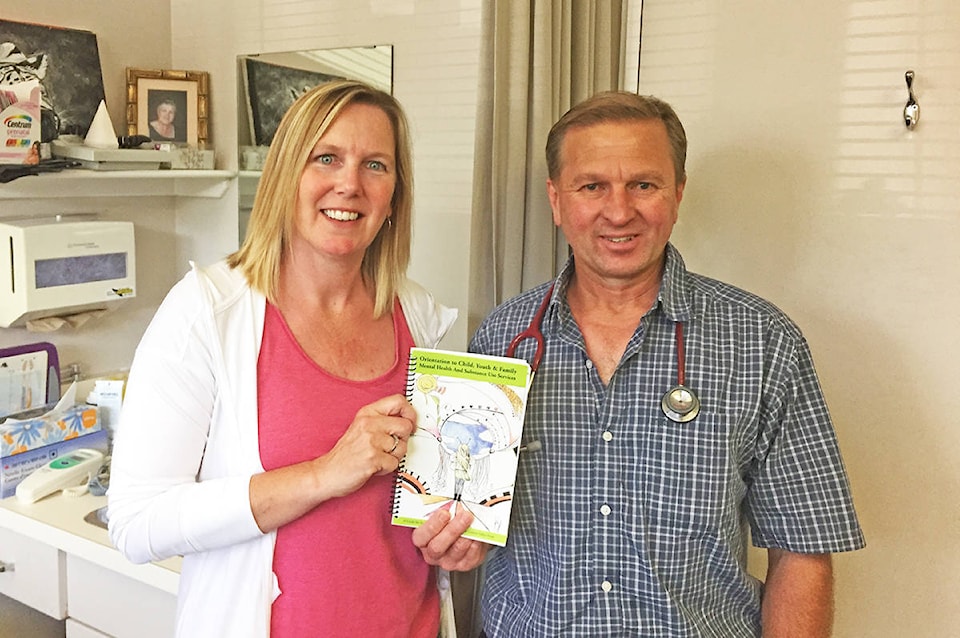As the as director of instruction, student services and safe schools for the Campbell River School District (SD72) Tracy Kennedy was becoming increasingly alarmed by the rates of youth suicide in Campbell River and knew that something had to be done.
“Our community has had enough suicides,” Kennedy said to herself. “We need to do whatever we can to keep our kids safe.”
She had heard about a new initiative called the Child and Youth Mental Health and Substance Use (CYMHSU) Collaborative, funded by a partnership between Doctors of BC and the provincial government. The goal of the Collaborative was to increase the number of children, youth and families receiving timely access to mental health and substance use services when needed.
The collaborative had established 64 Local Action Teams (LATs) in communities across BC since 2013 and Kennedy decided it was past time for one to be formed here.
So she started to form one.
She began by reaching out to Christine Colbert, executive director for the Campbell River and District Division of Family Practice, which represents family physicians in the region. Together they brought others on board, including Dr. Jan Coetzee as Kennedy’s co-chair.
By September 2015, the Campbell River LAT was formed consisting of 27 individuals representing 13 different agencies. Members included parents and youth with lived experience from FamilySmart, also representatives from Laichwiltach Family Life Society, Kwakiutl District Council (KDC), the John Howard Society, Ministry of Child and Family Development, RCMP, SD72, Success by Six, Island Health (Campbell River & District Hospital, Public Health, Aboriginal Health), First Nations Health Authority, and local family physicians.
Barb Kozeletski, whose daughter Hayden died by suicide in 2010, was one of two parent representatives on the LAT and is now chair of the Parent Advisory Committee for Foundry – the newly created youth hub focused on providing integrated care.
“It’s important to have family, parents and youth with lived experience work together with service providers so we can all learn from each other about what it takes to improve the mental health outcomes for children and youth,” Kozeletski says, adding that everyone being seen as equals and sharing a common goal was essential to the LAT’s success. “We were all sitting at the same table wanting the same thing.”
The LAT’s first task was to set priorities and identify where opportunities existed to better support children and youth with mental health and substance use issues.
They decided to provide a series of mental health literacy events and resources for the public, teachers and care providers to increase awareness and reduce stigma, and create a hospital-to-community protocol to ensure children and youth are referred to appropriate community services.
What they achieved was impressive.
A total of 12 training events were delivered to parents, youth, teachers, school counsellors, doctors and other care providers. Topics ranged from managing anxiety to the impact of trauma on child development and mental health.
An Orientation Guide (PDF) to help navigate the North-Island’s mental health system was updated. The guide was initially created by Island Health and FamilySmart as a result of a coroner’s inquest into Hayden’s death. More than 950 copies of the updated guide were distributed to doctors, clinics, aboriginal agencies, schools and other service providers.
A prescription pad was created for physicians to easily share with their patients with a list of local child and youth mental health and substance use resources.
A hospital-to-community referral protocol was developed and will be ready for use this fall. It includes an index of services and resources available, as well as a list of culturally-appropriate services for aboriginal peoples.
Funding for the LAT formally wrapped up in March of this year. However, participants say the legacy of the work continues with ongoing collaboration and new ways of working together.
As part of a formal evaluation, LAT members provided feedback on their work as part of the collaborative. They say that their involvement had made them more aware of community resources and helped them connect with others working towards the same goals.
“The LAT really solidified and expanded relationships,” Colbert says, adding these relationships are one of the the reasons physicians were involved early in the formation of the Foundry.
“This has been some of the most important work of my career,” agrees Annette Moulaison-Davis, manager of the Campbell River Hospital. “We are all so proud to have been part of this incredibly meaningful collaboration.”
Dr. Coetzee agrees. “There are many agencies and professionals involved in the delivery of mental health services. Our ongoing cooperation will give those suffering from mental illness the best chance of conquering their pain.”
In other news:
442 Squadron medevacs cruise ship crew member
Bracelet returned to B.C. WWII veteran after 73 years
miked@campbellrivermirror.com
Like us on Facebook and follow us on Twitter



